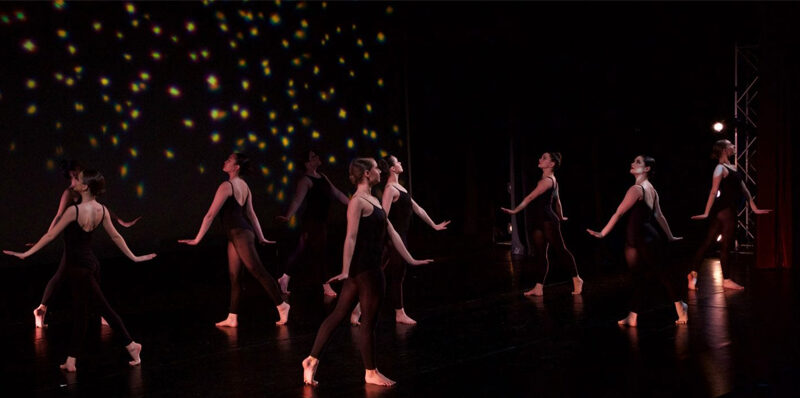Becoming a first-time manager and managing others is a significant transition in anyone’s career. You may have been promoted on the basis of your individual good performance but motivating and influencing others to take collective action is a whole different game. In the performing arts, we often heard young leaders tell us about the challenges of bringing their teams to work collaboratively.
As we reflected on why managing a team is difficult, we looked to other fields such as sports and the performing arts—where there are no second chances—where working together could literally be the difference between success and failure. Our own experience in dance had shown us how creative directors, while giving feedback on individual craft, also develop practices to enable synergy within their team.
Between late 2018 and early 2019, we studied six creative directors and their performing arts troupes in theatre and dance in India to examine their methods of building high-performing teams. We observed these artistic leaders at work, watched them in rehearsals, studied the troupes’ performances, conducted in-depth interviews, and also documented our own experiences working on dance projects with various collaborators. We specifically chose directors whose groups are known for the excellent quality of their work and synergistic performance. In other words, these were groups that seemed to have cracked the code to getting team members to perform at their collaborative best! And we wanted to know how.
Here are 5 insights from our study on how leaders can build high-performing teams:
Set and reinforce a strong vision
A mistake that new leaders frequently make is to assume that everyone understands and embraces the goals set by them. Especially in the arts, the vision is (usually) held only in someone’s head. So directors, composers, etc. understand the criticality of communicating vision and goals very clearly and repeatedly.
The Cirque do Soleil team admits that the most time is spent in large and small groups discussing the aim(s) for an upcoming production. It is in these conversations that one can create an ownership and common understanding of the shared creative project. Everyone has their own way of seeing things. For the vision to come alive, it needs to be discussed, built out with examples and stories, and actively engaged with all the time. Once everyone is moving together in the same direction, managing the movement becomes much easier.
Set benchmarks for performance and a feedback process early on
Whether performance can be quantified or not, make an effort to build consensus within the team on the common goals and the standard of performance. In the arts, even though performance is rarely quantifiable, we found that teams still endeavoured to align on standards. Theatre groups said they debriefed after each rehearsal and discussed ways in which their performance could improve. This process helped build clarity around standards and openness for feedback.
A method they used that was useful with even very young team members was to create a common language to measure and improve the quality of work; e.g., 0 = knowing your lines and movements, 1 = being able to complete all lines and movements without mistake, 2 = being able to do this fluidly, and so on.
Encourage team members to understand each other’s roles
As a leader, it is primarily important to allocate discrete responsibilities and accountability. In addition, one must also enable what we call “inter-positional knowledge”. It encourages team members to anticipate needs of others, to be more helpful towards each other, and spontaneously bridge the gaps that exist between defined responsibilities. Theatre directors often invite actors to take the “hot seat” and answer questions from the perspective of different characters in the play other than the one they were enacting.
When working with an individual on their task, it may be helpful to ask how they imagine other members to be involved/affected by the specific job under discussion. This helps team members examine the whole picture, identify potential blocks in their process, and problem-solve for group success.
Value everyone equally
Every member of the team looks to the leader for signals that they belong in the team. There is a hierarchy in all organizations. There are different roles played by people. While not everyone has equal roles, they need to be valued and treated equally. This is a phenomenon Keith Sawyer (an expert on group flow) observed in jazz ensembles. Even the junior-most team member could contribute to a musical piece because there was, in his words, a “blending of egos”.
In your team, consider what each member contributes and create the platform to enable that. Others in the team will take their cue from you. It is up to you to set the tone for how people communicate with and treat each other in the team.
Deal with mistakes carefully
How you handle errors affects the rhythm of the group. Of course mistakes need to be corrected and suitable feedback has to be given. But your role is also about helping the group cope from setbacks without losing confidence.
In one of the dance groups we met, the leader talked about how if one of the dancers made a mistake while performing live, others cannot stop to correct her/him. They would continue and the one who made the error would self-correct and re-join the flow of the team. For them, the conversation around mistakes was about helping the team cope while in performance mode. After the show, they would have a discussion on things that went well and those that did not, enabling the team to improve performance without breaking rhythm.
High-performing teams walk the thin line between a safe space that builds confidence and one that pushes members outside their comfort zone. And as a team leader, you play an important role in drawing this line.
This article was first published on HBR Ascend.
